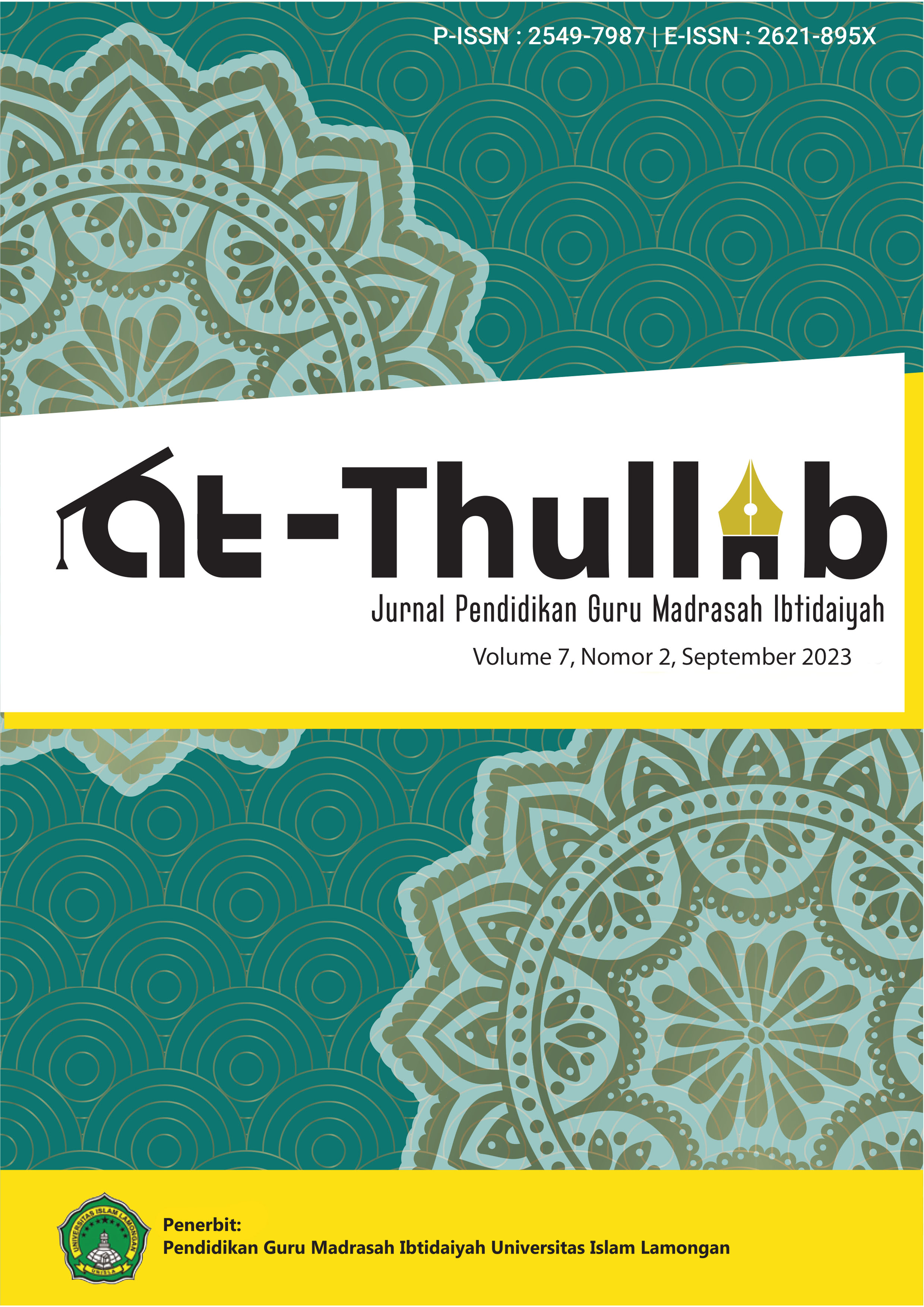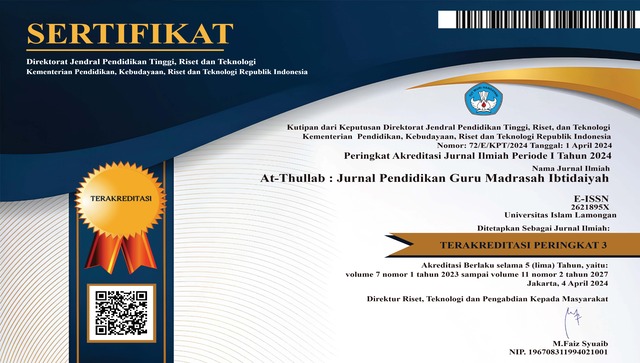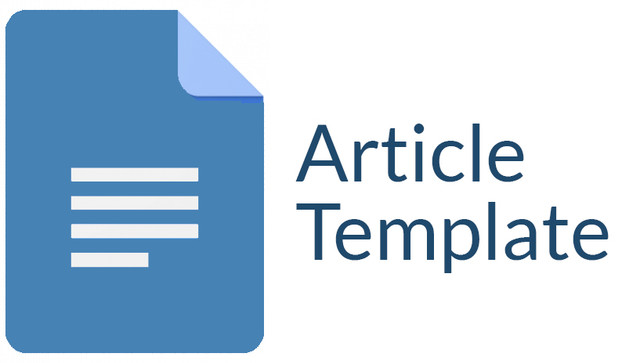Pengaruh Pendekatan Etnomatematika Terhadap Hasil belajar Siswa Materi Sifat-sifat Bangun Datar di Sekolah Dasar
DOI:
https://doi.org/10.30736/atl.v7i2.1616Keywords:
Matematika, etnomatematika, hasil belajarAbstract
Abstrak: Hasil belajar matematika siswa dipengaruhi oleh penguasaan konsep matematika dan kemampuan pemecahan masalah. Siswa Kelas IV di SD NU Kanjeng Sepuh Sidayu Gresik menghadapi permasalahan sulit memahami konsep matematika, minimnya pengetahuan budaya lokal, dan kesulitan menerapkan matematika dalam kehidupan sehari-hari. Guru perlu memilih pendekatan untuk mengatasi permasalahan tersebut. Etnomatematika merupakan jembatan matematika dan budaya yang bisa digunakan sebagai alternatif pendekatan dalam pembelajaran. Penelitian ini bertujuan untuk mengukur pengaruh pendekatan etnomatematika terhadap hasil belajar siswa matematika. Metode penelitian kuantitatif yang digunakan adalah one group pretest posttest design dengan subjek 47 siswa Kelas IV di SD NU Kanjeng Sepuh Sidayu Gresik. Penelitian menggunakan tes Pretest dan Posttest dengan 5 soal uraian. Hasil belajar kelas eksperimen memiliki rata-rata 74,08, sedangkan kelas kontrol hanya 54,00. Analisis data menggunakan SPSS versi 25 dengan uji independent sample t-test menunjukkan nilai signifikansi (2-tailed) 0,000 < 0,05. Dengan thitung 4,499 > ttabel 1,679, H0 ditolak dan H1 diterima. Dari penelitian tersebut, disimpulkan bahwa pendekatan etnomatematika signifikan meningkatkan hasil belajar siswa pada materi sifat-sifat bangun datar untuk Kelas IV di SD NU Kanjeng Sepuh Sidayu Gresik.
Â
Abstract: The learning outcomes of students in mathematics are influenced by their mastery of mathematical concepts and problem-solving abilities. Fourth-grade students at SDNU Kanjeng Sepuh Sidayu Gresik face challenges in understanding mathematical concepts, a lack of knowledge about local culture, and difficulties in applying mathematics in daily life. Teachers need to choose an approach to address these issues. Ethnomathematics serves as a bridge between mathematics and culture and can be used as an alternative approach to teaching. This research aims to measure the influence of the ethnomathematics approach on students' mathematics learning outcomes. The research method used is a quantitative one-group pretest-posttest design with 47 fourth-grade students at SDNU Kanjeng Sepuh Sidayu Gresik as the subjects. The research employs pre-test and post-test with five essay questions. The experimental class achieved an average learning outcome of 74.08, while the control class only scored 54.00. Data analysis using SPSS version 25 and Independent Sample T-test shows a significance value (2-tailed) of 0.000 < 0.05. With a calculated tvalue of 4.499 > ttable of 1.679, H0 is rejected, and H1 is accepted. From the study, it is concluded that the ethnomathematics approach significantly improves students' learning outcomes in the topic of plane figure properties for fourth-grade students at SDNU Kanjeng Sepuh Sidayu Gresik.
Â
Downloads
References
Astuningtyas, E. L., Wulandari, A. A., & Farahsanti, I. (2017). Etnomatematika Dan Pemecahan Masalah Kombinatorik. Jurnal Math Educator Nusantara, 3(2), 59–134. https://doi.org/10.29407/jmen.v3i2.907
D’Ambrosio, U. (1985). Ethnomathematics and its Place in the History and Pedagogy of Mathematics. For the Learning of Mathematics, 5, 44–48.
Hartanti, S., & Ramlah, R. (2021). Etnomatematika: Melestarikan Kesenian dengan Pembelajaraan Matematika. Ideas: Jurnal Pendidikan, Sosial, Dan Budaya, 7(2), 33. https://doi.org/10.32884/ideas.v7i2.347
Julaika, N. (2021). Pengaruh Pemanfaatan Permainan Kelereng Berbasis Etnomatematika Sebagai Media Pembelajaran Terhadap Hasil Belajar Matematika T.A 2020/2021. Universitas Muhammadiyah Sumatera Utara.
Machali, I. (2017). Metode Penelitian Kuantitatif. Yogyakarta: Pustaka An Nur.
Mulyasari, D. W., Abdussakir, A., & Rosikhoh, D. (2021). Efektivitas Pembelajaran Etnomatematika “Permainan Engklek†Terhadap Pemahaman Konsep Geometri Siswa Sekolah Dasar. Jurnal Tadris Matematika, 4(1), 1–14. https://doi.org/https://doi.org/10.21274/jtm.2021.4.1.1-14
Nasryah, C. E., & Rahman, A. A. (2020). Pengaruh Pendekatan Etnomatematika Terhadap Kemampuan Pemecahan Masalah Matematis Dan Motivasi Siswa Sd Di Aceh Barat. MAJU: Jurnal Ilmiah Pendidikan, 7(2), 126–140.
Nursinta, N. (2022). Pengembangan Modul Berbasis Etnomatematika Budaya Mbojo untuk Meningkatkan Hasil Belajar Siswa Kelas V di Sekolah Dasar pada Materi Bangun Ruang Tahun Ajaran 2022/2023. Universitas Muhammadiyah Mataram.
Prastica, Y. (2021). Pengaruh Penggunaan Media Pembelajaran terhadap Hasil Belajar pada Mata Pelajaran Matematika Siswa Sekolah Dasar. Jurnal Basicedu:Journal Of Elementary Education, 5(5), 3260–3269.
Robiatussalamah. (2019). Pengaruh Pendekatan Kontekstual Berbasis Etnomatematika Terhadap Kemampuan Koneksi Matematis dan Motivasi Belajar Siswa. Universitas Pendidikan Indonesia.
S. Sirate, F. (2012). Implementasi Etnomatematika Dalam Pembelajaran Matematika Pada Jenjang Pendidikan Sekolah Dasar. Lentera Pendidikan : Jurnal Ilmu Tarbiyah Dan Keguruan, 15(1), 41–54. https://doi.org/https://doi.org/10.24252/lp.2012v15n1a4
Safitri, F. N., Reffiane, F., & Subekti, E. E. (2020). Model Problem Based Learning (PBL) Berbasis Etnomatematika pada Materi Geometri terhadap Hasil Belajar. MIMBAR PGSD Undiksha, 8(3), 492–498. https://doi.org/https://doi.org/10.23887/jjpgsd.v8i3.29040
Simamora, T., Harapan, E., & Kesumawati, N. (2020). Faktor-Faktor Determinan Yang Mempengaruhi Prestasi Belajar Siswa. JMKSP (Jurnal Manajemen, Kepemimpinan, Dan Supervisi Pendidikan), 5(2), 191. https://doi.org/https://doi.org/10.31851/jmksp.v5i2.3770
Sinthiya, I. A. P. A., & Sobri, M. R. (2015). Rancangan Aplikasi Sistem Cerdas Pembelajaran Ilmu Bangun Datar SD Negeri 01 Candiretno. Jurnal TAM (Technology Acceptance Model), 4, 19–25. https://doi.org/10.56327/jurnaltam.v4i0.33
Wahyuni, A., Aji, A., Tias, W., & Sani, B. (2013). Peran Etnomatematika Dalam Membangun Karakter Bangsa. Makalah Seminar Nasional Matematika Dan Pendidikan Matematika, Prosiding, Jurusan Pendidikan Matematika FMIPA UNY, Yogyakarta:UNY, 1(1), 114–118.
Downloads
Published
How to Cite
Issue
Section
License
Authors who publish with this journal agree to the following terms:
The journal allow the authors to hold the copyright without restrictions and allow the authors to retain publishing rights without restrictions. Authors retain copyright and grant the journal right of first publication with the work simultaneously licensed under a Creative Commons Attribution-ShareAlike 4.0 International License. that allows others to share the work with an acknowledgement of the work's authorship and initial publication in this journal.
Authors are able to enter into separate, additional contractual arrangements for the non-exclusive distribution of the journal's published version of the work (e.g., post it to an institutional repository or publish it in a book), with an acknowledgement of its initial publication in this journal.
Authors are permitted and encouraged to post their work online (e.g., in institutional repositories or on their website) prior to and during the submission process, as it can lead to productive exchanges, as well as earlier and greater citation of published work (See The Effect of Open Access).
The journal allows third parties (readers, researchers, and others) to share and adapt the material in line with the license. In addition, the material must be given appropriate credit, provided with a link to the license, and indicate if changes were made. If authors remix, transform, or build upon the material, they must distribute their contributions under the same license as the original.













